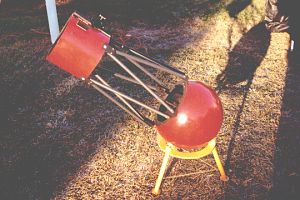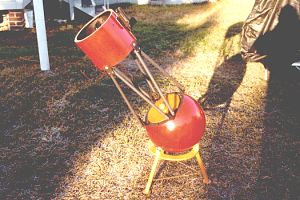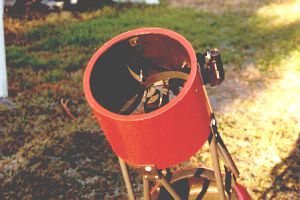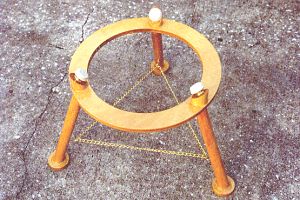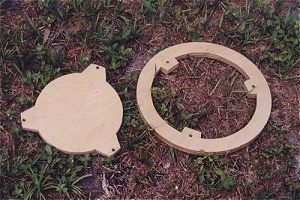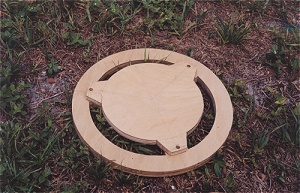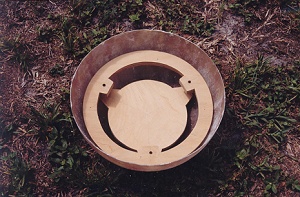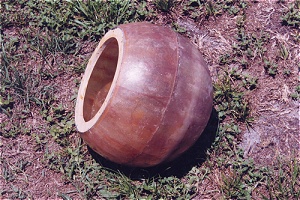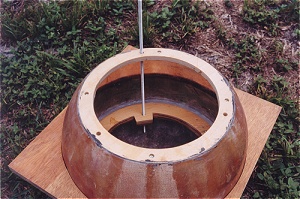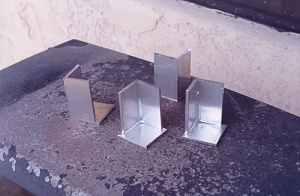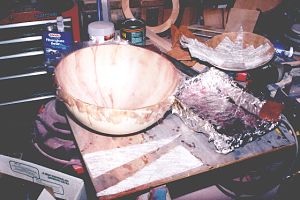
This photo shows the process of laying up the fiberglass for half of a sphere. The mold is an old
plastic lamp shade 14.4 in. in diameter. The white wedges are "gores" cut from fiberglass cloth about
to be soaked in resin in the foil lined pan then placed in the mold.
|
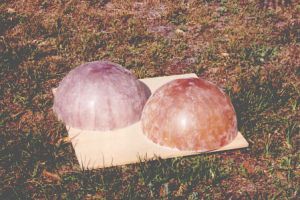
Here are two completed and cured half spheres after being popped out of the mold and having excess
material trimmed away.
|
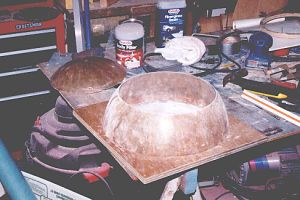
Here one half sphere has been truncated. This creates the opening in the sphere.
|
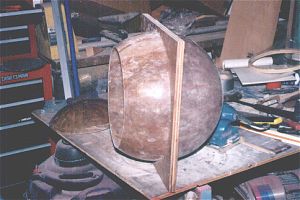
Here a truncated and un truncated hemisphere are being joined together to make the complete sphere for
the ball mounting. More fiberglass is used to join the two halves.
|
This photo shows the primary mirror cell (left) and the support ring it will hang from (right) once
installed inside the sphere. Both parts are made out of hardwood plywood. The primary mirror will
sit on felt pads on the piece on the left. Clips will hold it in place.
|
This photo shows how the "ears" and bolt holes line up on the two parts. When installed in
the sphere the mirror cell (shown on top here) would hang below the support ring and the two pieces
would be separated by stiff springs. Collimation screws will run through the bolt holes. By rotating
the mirror cell so that the "ears" don't overlap, the cell can pass through the center
of the ring to insert and remove the primary mirror.
|
This photo shows how the support ring and primary mirror cell will sit inside the sphere.
|
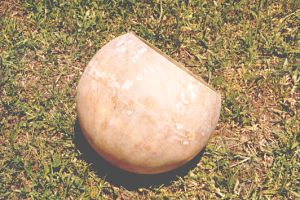
Here is a completed sphere. The blemishes and the line where the two halves join have been touched
up with Bondo and the whole thing sanded smooth.
|
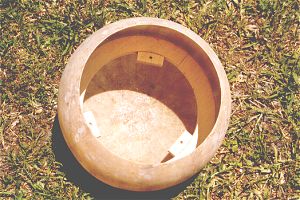
Here is a view inside the sphere showing the wooden support ring that serves as the mounting for the primary
mirror cell. The ring has been epoxied to the sphere. Another ring will be epoxied in the opening of
the sphere to strengthen it and provide mounting points for the trusses.
|
Here we see the sphere after the second plywood support ring has been epoxied into place in the hole left
by truncating the sphere. This ring greatly strengthens the fiberglass sphere and makes it very rigid.
It also serves as the mounting point for the lower ends of the trusses.
|
This photo shows how long pieces of threaded rod are used as collimation bolts. They pass through the
top support ring, the mirror cell support ring and all the way down to the primary mirror cell (not
in place in this photo). This allows for easy collimation of the primary mirror from the top of the
sphere.
|
This photo shows the lower truss anchors. They are made by welding a piece of Aluminum angle onto
a piece of flat Aluminum stock. This photo was taken before the mounting holes were drilled in them.
See the photos below to see how these anchors are used to hold the lower ends of the trusses in
place.
|
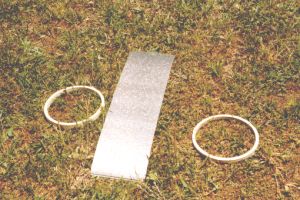
Here are the three parts that make up the secondary cage. The metal band is an 8 inch wide section
cut out of a 10 inch diameter piece of steel air conditioning duct. The two rings are cut out of 1/4
inch plywood.
|
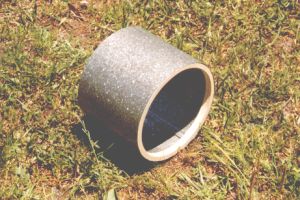
Here is the secondary cage assembled. The steel band has a seam that locks it together. Once
the rings are installed and glued in place it makes a rigid but very light secondary cage. Bondo
is used to fill the seam in the metal before painting.
|
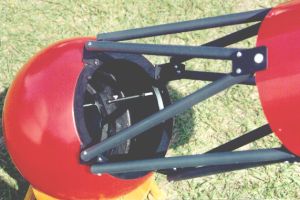
This photo gives you some idea how the truss assembly is put together. The trusses are aluminum
tubes covered with black heat-shrink tubing.
|
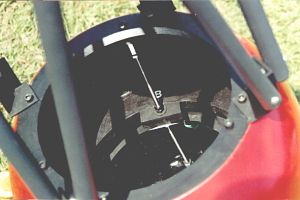
Here you are seeing a peek inside the ball. You can see one of the three collimation screws that
come all the way to the top of the ball (since there would be no way to access them from behind like
in an ordinary scope). You can also see the reflection of the screw in the primary mirror.
|
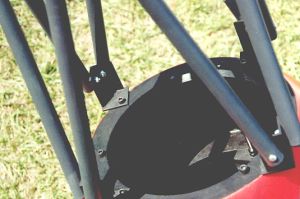
Here you can get some idea of how the trusses are attached to the top ring in the fiberglass ball.
|
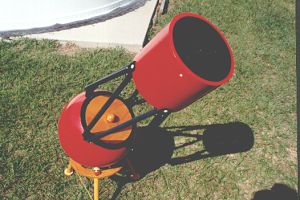
This photo shows the scope with the wooden dust cap in place on the ball. This is how the scope
got its name. It looks like a cookie jar.
|
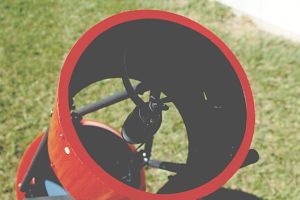
Here is a view of the secondary cage and secondary mirror holder.
The three curved vane spider is barely visible in this photo.
|
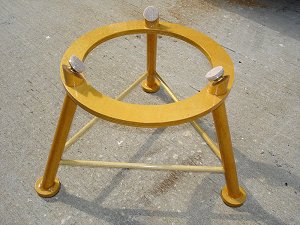
Here is a view of the new and improved base for the telescope. The chains did a pretty good
job of preventing the legs from splaying out, but a strong bump from the side could cause
them to bend in and break. After that happened a couple of times I replaced the chains with
dowels.
|
